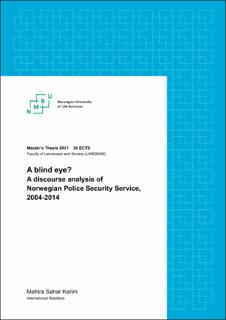| dc.description.abstract | In the past two decades, Norway has witnessed two right-wing terrorist attacks. On July 22, 2011, Anders Behring Breivik detonated a car bomb near the Government Quarter in Oslo. He then traveled to the Workers’ Youth League summer camp at Utøya island. In a police uniform, he opened fire and started shooting. That day, 77 Norwegians lost their lives. July 22 is remembered as the deadliest day in Norwegian history since the war. The second terrorist attack was carried out by Philip Manshaus on August 10, 2019. While he was successful in killing his first target, his step-sister Johanne, the second target, a mosque outside of Oslo, was averted by three elderly men present at the time of the attack. Right-wing terrorists are not simply overrepresented in the statistics of terrorists who have carried out attacks in Norway. They are in fact the only kind of terrorists who have carried out terrorist attacks in Norway in the past two decades. Yet, for the past two decades, the Norwegian Police Security Service (PST) has dominantly constructed extreme Islamists as the greatest terrorist threat to Norwegian peace and security. This study problematized this ‘truth’ constructed by PST and aimed to analyze how it was possible for PST to construct such a truth.
This study’s primary focus was to analyze the truth construction of terrorist threats in PST’s annual threat assessments in the timeframe 2004-2014. The study met this aim by analyzing critically how the meaning of terrorism, terrorists, and terrorist threats are socially constructed in discourse. The main finding of this study was that the truth of extreme Islamists being the greatest threat to Norway was possible due to the power of the discursive construction of the global campaign of War on Terrorism (GWT), launched by the USA in the aftermath of 9/11. It found that GWT constructed terrorism as something carried out by international extreme Islamists who targeted international peace and security. This construction was so strong that PST assumed extreme Islamists to be a terrorist threat to Norway as well. The study concludes that because of this truth, PST turned a blind eye to right-wing extremism between 2004-2014, downplaying the threat from right-wing terrorists. | en_US |

